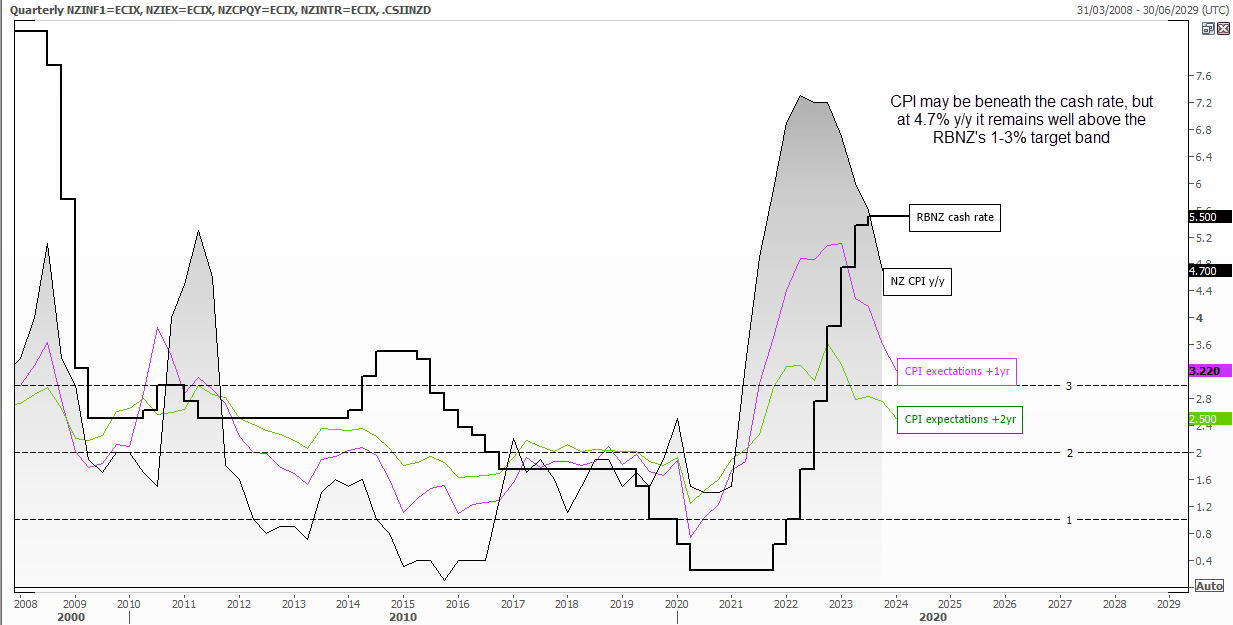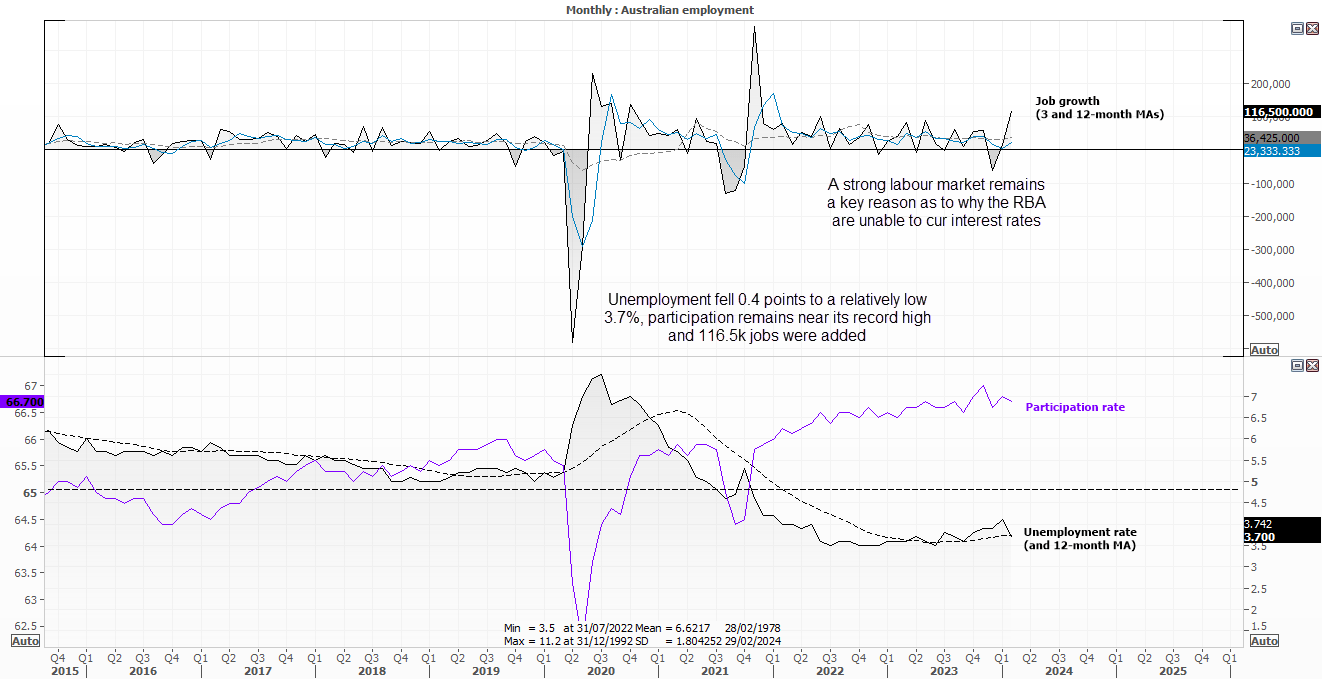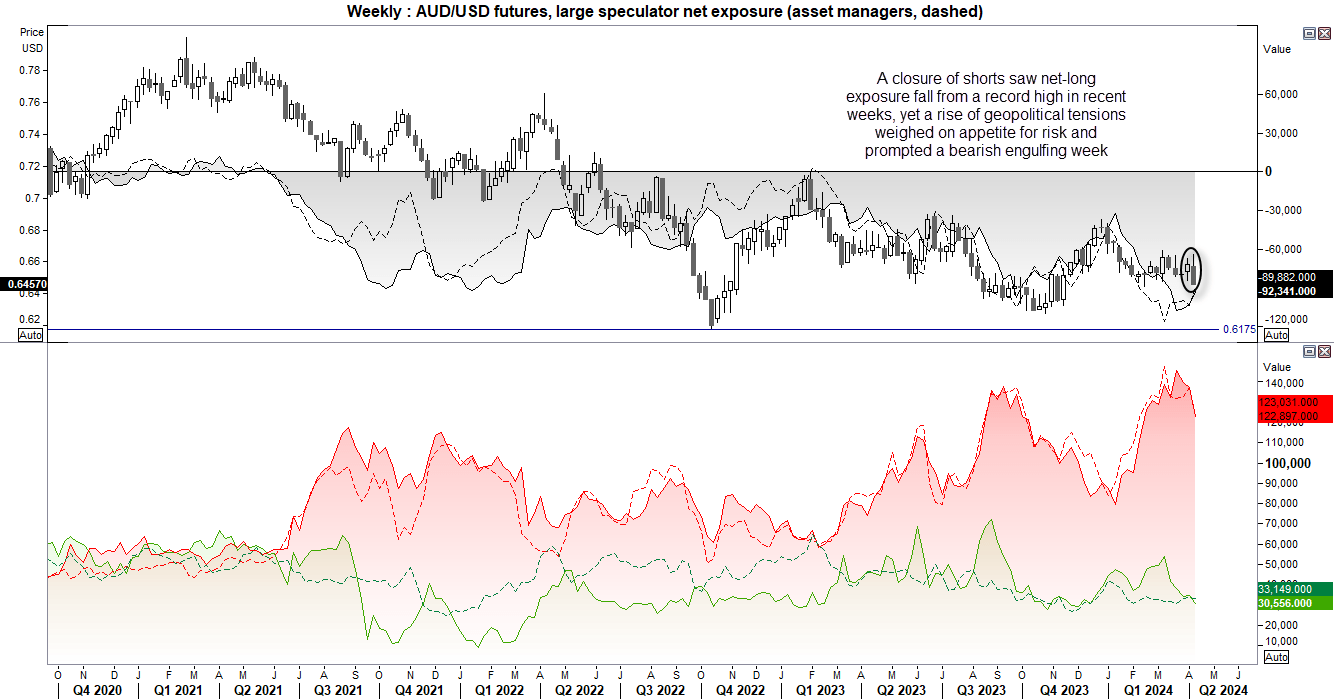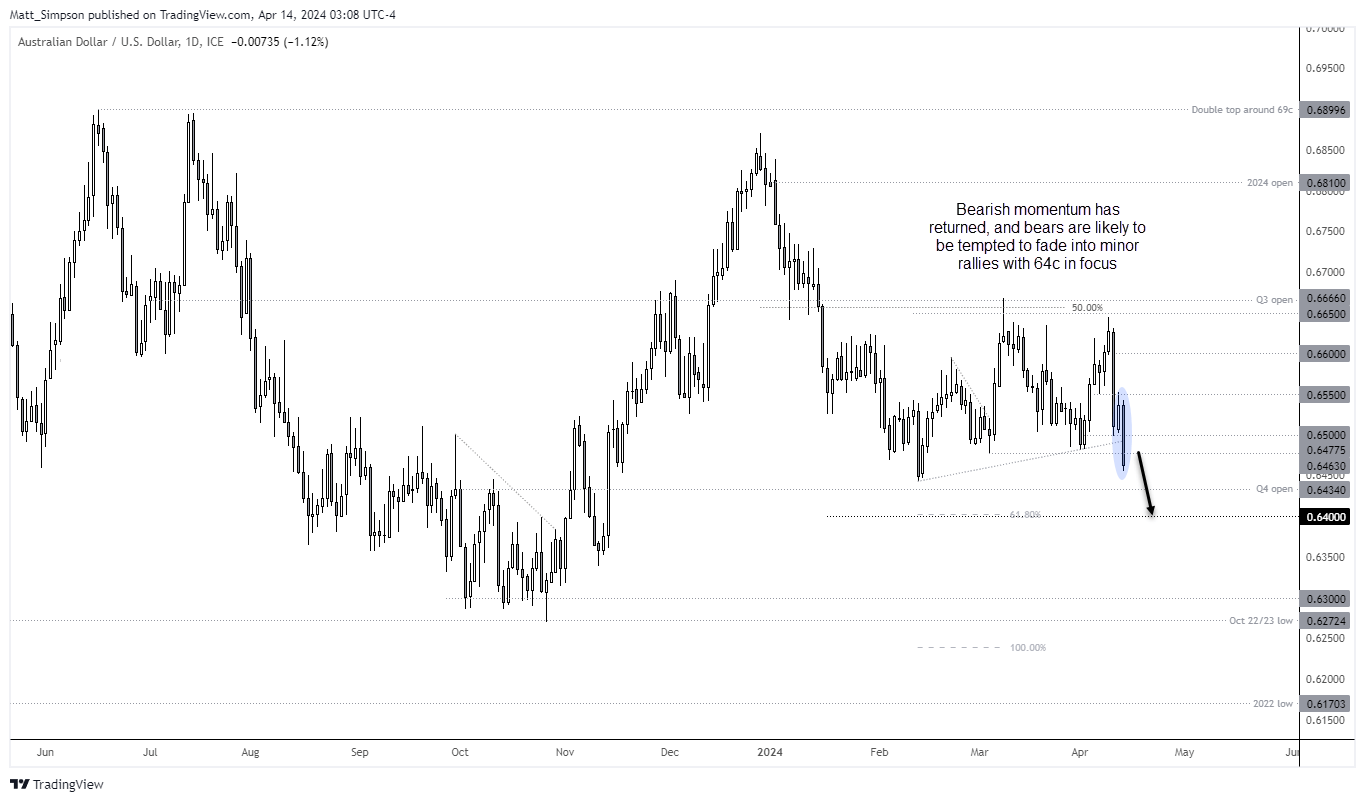
- AUD/USD suffered its worst day in a year as strong US inflation data all but cancelled bets for any Fed cuts this year
- AUD/JPY struggled to hold above 100 for a second week and formed a bearish hammer on the weekly chart
- AUD/NZD formed a bearish engulfing week after the RBNZ disappointed dovish bets
- EUR/AUD fell for a fourth week as confidence of an ECB June cut continued to grow

Inflation data is the key theme next week, with key reports being released for the UK, Europe, Canada and New Zealand. What makes it interesting is that central banks from each region show the potential to cuts rates this year, although out of the four it is just the RBNZ that have steered clear from openly discussing cuts. And that means they may actually be the last to cut rates out of the ECB, BOE and BOC despite being the first major central bank to hike rates following the pandemic (South Korea beat them by a day).
Despite excitement of BOE beginning cuts as soon as June, I feel that current inflation levels remain too high relative to the BOE’s 2% target. Which means if the BOE are to cut at all it is likely to be in Q2 (and that brings upside potential for GBP/AUD).
Canadian CPI warrants a look because core CPI was just above the midband of the BOC’s 1-3% target range at 2.1% y/y. What is likely keeping the BOC from cutting rates is that median and trimmed mean CPI remains above 3%, but if they move beneath 3% next this week and core CPI is 2% or lower, I suspect the Canadian dollar will falter and send AUD/CAD higher.
And of course, should Europe’s CPI data continue to soften then all likelihood we’ll see EUR/AUD fall for a fifth week.
New Zealand inflation:
Given the close trade relations between New Zealand and Australia, AUD/USD traders will be keeping an eye on NZ CPI figures to see if it entices hopes of RBNZ easing, which in turn could raise hopes for the RBA to follow suit.
The RBNZ disappointed doves last week with a very short statement which refrained from any policy clues. And I suspect that is because they want to see this week’s inflation figures before making any such changes.
However, the annual rate of NZ inflation was at 4.7% in Q4, which remains “too high” for the RBNZ’s liking and well above their 1-3% target band. It is encouraging to see inflation expectations are lower, but I very much doubt we can expect a miracle in next week’s CPI figures that could warrant the RBNZ to cut any time soon.

AU employment:
January’s employment figures raised some hope of RBA easing, given the unemployment rate rose to a 2-year high – not to mention the 106k full-time jobs lost in December. Yet these now appear to be a statistical blip, as unemployment fell from 4% to 3.7% in February and 116.5k jobs were added (highest month since 2021). And with unemployment historically low and the economy pumping out jobs, it remains a key reason as to why the RBA are unable to ease. Especially when they also deem inflation to remain “too high”. And as the RBA seem to pay more attention to Fed policy than most if not all other central banks, it is difficult to build a solid case for an RBA cut in September or October. Especially if we see another decent employment report on Thursday.

AUD/USD futures – market positioning from the COT report:
Asset managers were net short by a record amount five weeks ago, as were large speculators three weeks ago. Yet a closure of shorts over the past three weeks saw net-short exposure fall from a record high whilst longs remained subdued. However, it seems longs are now reinitiating given the increase of geopolitical tensions, which weighed on Wall Street and the Australian dollar on Friday. So whilst it could be argued AUD/USD futures traders are overly bearish, there’s nothing to say shorts couldn’t continue to dominate whilst appetite for risk remains dented.

AUD/USD technical analysis
A bearish engulfing candle formed on Friday which saw AUD/USD fall nearly 3% from Tuesday’s high. The Q4 open around 0.6434 could make a likely support level, but withbears very much back in control I suspect they will be tempted to fade into minor rallies with 64c now in focus. Whether it can hold above that key level is likely down to whether geopolitical tensions cool off, or not.

-- Written by Matt Simpson
Follow Matt on Twitter @cLeverEdge



